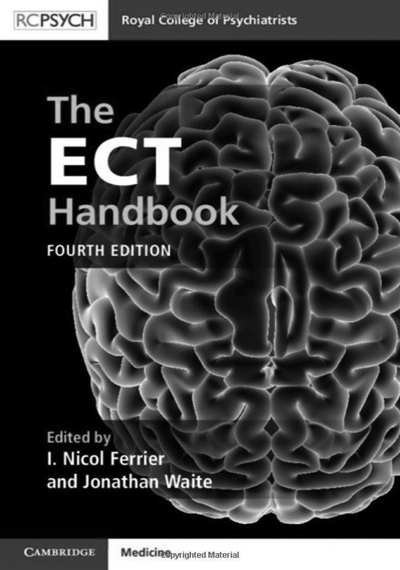
The ECT Handbook is an essential addition to your bookshelf whether you are a young psychiatrist in the making or already running a well-established ECT department. This fourth edition, published by Cambridge University Press, is surprisingly comprehensive for its relatively short 292 pages and it presents an overview of the current best practice in ECT as well as discussing wider issues relevant to the practice of ECT. It fulfils an important role in collating the latest evidence in an accessible way for trainees, prescribers and seasoned practitioners of ECT, as well as providing a useful update for anyone interested in the modern practice of ECT. The book is well laid out and consists of 28 concise, stand-alone chapters written by experts in their field. Each chapter is summarised and key points are highlighted. The book is easy to use and acts as an excellent point of reference for the use of ECT in different mental and medical disorders.
Despite ECT having a controversial history, it is still regarded as one of the most effective treatments in psychiatry for the treatment of severe depression, psychotic depression and treatment-resistant depression. The Handbook presents the clear evidence base for these indications, but also looks at the utilisation of ECT in bipolar disorder, intellectual disability, children and adolescents, older adults, neuropsychiatric disorders and in pregnancy and the postnatal period, presenting the most up-to-date guidelines and evaluating available evidence. There are also chapters dealing with how ECT works, potential side-effects, anaesthetic issues, legal considerations, and patients’, carers’ and the public's perception of ECT. Hence some parts of the book will have a more general appeal; other parts are more aimed at members of ECT teams who need practical guidance.
Of particular interest, the chapter on the use of ECT in the treatment of schizophrenia provides new and exciting evidence on the use of clozapine and ECT in combination to improve clinical outcomes in challenging cases. There is also a very timely chapter on ketamine for psychiatric disorders, which provides a succinct critique of the evidence for efficacy and cautions that esketamine could soon be coming to a clinic near you! Other chapters, such as those on the practical aspects of ECT, interactions between ECT and prescribed medication and seizure monitoring in ECT, are more specifically geared towards ECT practitioners and provide expert guidance on how to carry out ECT more effectively, confidently and safely.
One small criticism I have is that there is some repetition between the chapters. Of course, this is likely to occur when different authors contribute to different sections. However, in some places there are discrepancies that, although minor, could potentially cause slight confusion in the reader.
In summary, this is a well-written, well-researched, evidence-based handbook aimed particularly at ECT practitioners, but also of relevance to any practising psychiatrist. If you are looking to gain knowledge, confidence and a deeper understanding of ECT and other physical treatments then this is the book for you.



eLetters
No eLetters have been published for this article.